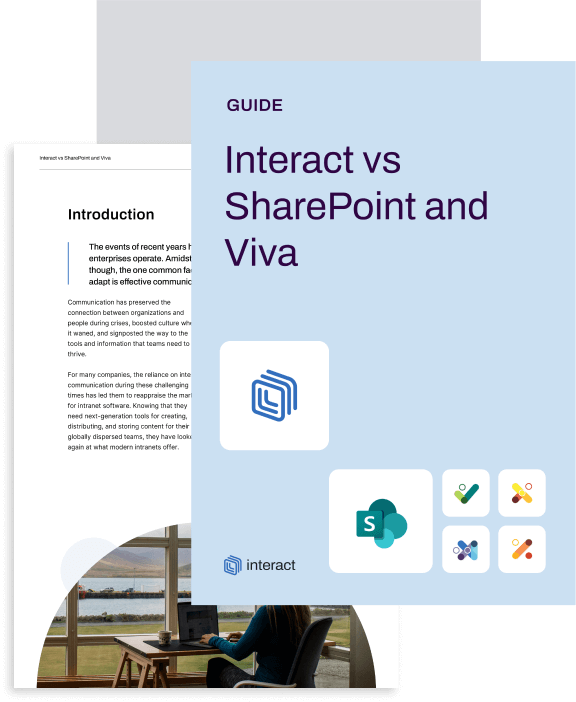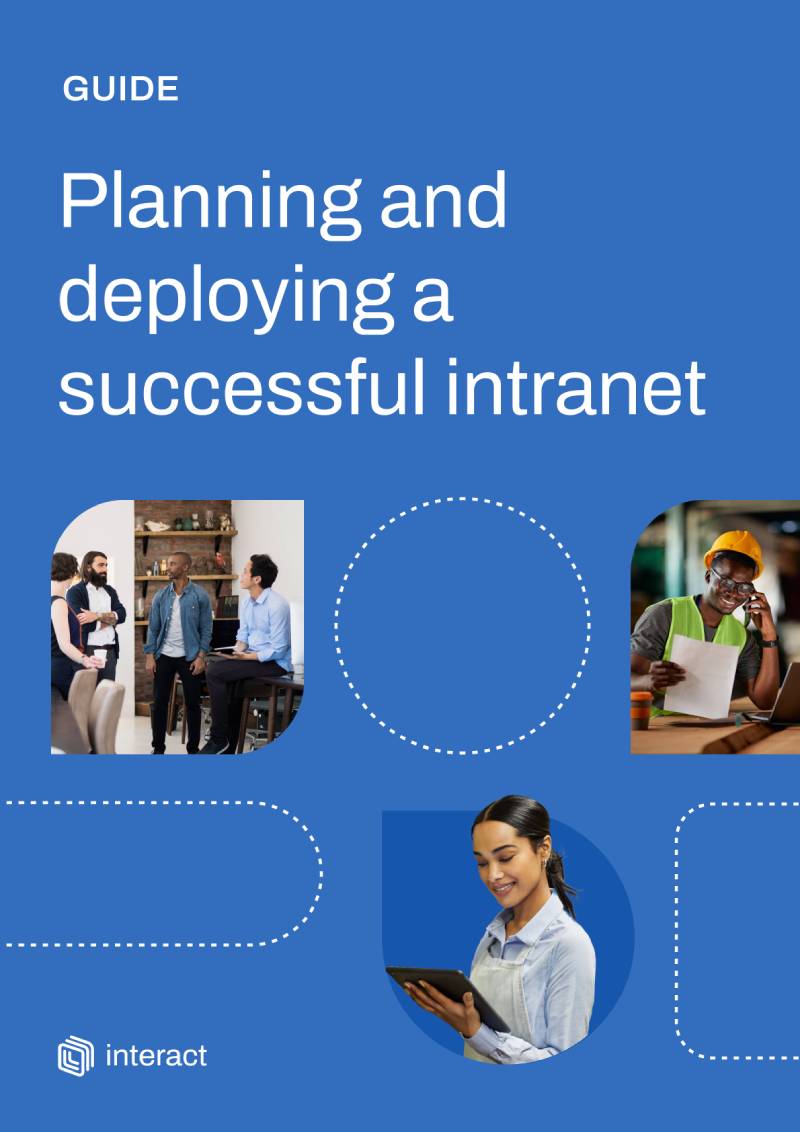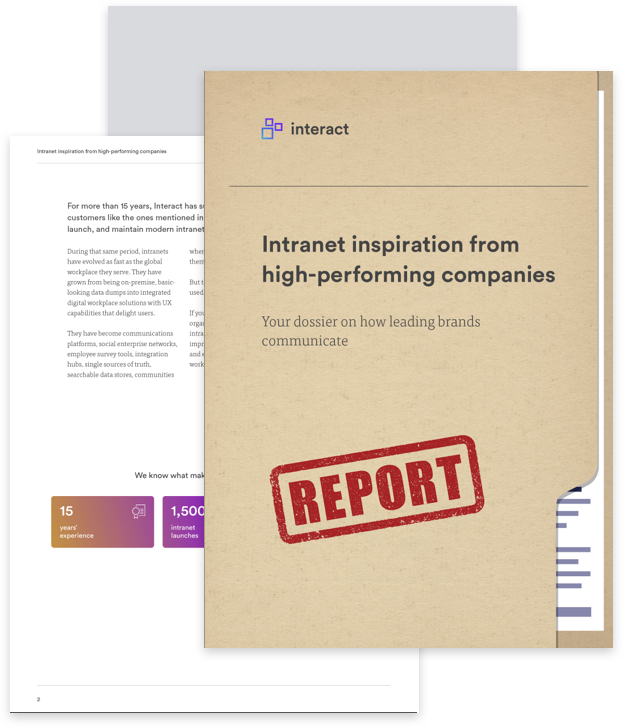‘Build or buy?’ is a common question when starting an intranet project. This article explores the intricacies of the build or buy intranet debate to help you make your own informed decision.
There are many options available for organizations considering a new intranet project, but perhaps the most fundamental question is whether you should build or buy. On the surface it may seem a feasible option to look at building internally, but, as we will explain below, the total cost can be significantly higher and buying an ‘off-the-shelf’ solution may be a better option.
Custom-built intranets explained
While they will be created to reflect the distinct values and branding of the host organization, a custom-built intranet is distinct from some other forms of ‘from scratch’ custom-built software because they are usually created as a layer on top of an existing platform, most often Microsoft SharePoint.
Launched in 2001, SharePoint is first and foremost a document management system (DMS) and part of the Microsoft 365 suite. SharePoint performs well as a DMS, but as the basis for a custom-built intranet, it often leaves end-users and intranet managers feeling frustrated.
There are many reasons why a SharePoint intranet isn’t the same as an internal communications intranet such as Interact – detailed in this article – and the drop-off rates from companies looking to replace their SharePoint-based intranets speak for themselves. At Interact, a high percentage of inquiries we get from companies looking for a new intranet are because their existing SharePoint intranet is difficult manage and challenging to update.
Interact vs. SharePoint: discover the best intranet solution for your organization
Off-the-shelf intranets explained
An off-the-shelf intranet is one that you can buy with minimal-to-no requirement for customization or IT-intensive maintenance. These can be especially strong choices when they offer customization options that allow the intranet to truly respond to your organization’s specific needs.
Software-as-a-service (SaaS) products like Interact’s intranet software allow organizations to reduce capital expenditure, make costs predictable over time, and achieve greater scalability. In its latest Market Guide on intranets, Gartner concludes that organizations now require cloud-based, agile platforms, which give them the flexibility they need to improve employee experiences.
‘Outraged’ by stale, outdated intranet solutions, companies have turned to packaged intranets like Interact’s as part of the general shift to what SaaS can deliver in terms of cost predictability and time to value.

While terms like ‘off-the-shelf’ or ‘out-of-the-box’ may feel off-putting for organizations wondering whether to build or buy an intranet that is tailored to their needs, hosted intranet solutions from leading vendors take a consultative and customized approach, meaning customers get a purpose-built intranet running on proven software, but with a selection of features and add-ons that answer their requirements.
After 15 years and over 1,500 intranet launches, our Delivery team has honed a proven methodology focusing on deep organizational knowledge. In many cases our team help customers to plan and train early, rolling out iterative software platforms so that feedback and stakeholder buy-in are gained along the way. This helps to create a platform that employees can love.
Common build or buy intranet comparisons
Predictable vs. unpredictable costs
Custom-built intranet projects may give rise to unpredictable costs because they require ongoing development, typically from third-party developers and IT experts. As the charges of these experts change according to supply and demand (and inflation), this can require extra budget across a project plan. It may be challenging to budget precisely if more hours are required due to unforeseen circumstances, such as the acquisition of a company that adds extra users and software platforms to your digital workplace.
Custom-built intranet projects may carry a higher level of risk than a SaaS product with set pricing then, not just from the initial effort and expertise involved in year one, but from the additional work (e.g., new features) required in further years, alongside hosting, security, and support costs.
With a SaaS intranet, new features are constantly being released and engagement is kept high. Hosting, support, updates, and security testing are all part of the predictable costs.
Build or buy intranet time to value
Buying an intranet solution can also offer the chance to create value for employees faster. And with quantifiable results.
Because packaged intranets are, in many cases, launched faster than custom builds, they ensure that both employees and organizations can benefit sooner. Packaged intranet solutions can often be live to all, or a significant subset, of employees in as little as three or four months, and without the need for a software POC (proof of concept). Another important consideration in the build or buy intranet debate is that building a custom solution (e.g., on SharePoint), can, according to Nielsen Norman, take at least fourteen months, with a commensurately slower time to value.
Planning & deploying a successful intranet
Positive outcomes from a faster rollout can then be quantified with often astonishing results over the long term. As an example, an average Interact customer with 15,000 employees (both online and offline) can benefit significantly from employees spending less time searching for information: potentially saving millions of dollars in lost productivity.
Furthermore, for the same-sized company, even a 0.3% reduction in employee churn because of an improved employee experience could potentially equate to over $3.6m in savings.
With a SaaS-based intranet offering faster time to value, these metrics can be realized sooner.
Important questions to ask about your intranet project

When considering whether to build or buy an intranet, start with some basic questions:
- What is the primary objective of the intranet? For example, is it to facilitate communication to and amongst employees, give employees access to documents, etc.
- How many workers are desk-based and how many are frontline or in the field?
- Who will be the day-to-day owner of the intranet? For example, Comms, IT, or HR
- How much time and money do you have to invest in an intranet and its upkeep?
- How accessible is training to your employees? Do you need something simple and intuitive, or can you invest the time in getting users up to speed and adopting the intranet?
- How important are regular new features and functionality?
- What other investments have you made in your digital workplace, and how are your users accessing and using these?
Build or buy: what’s the best option for you?
It’s not completely out of the question to have a custom-built intranet that ticks all the boxes on your organization’s checklist of what it needs from its intranet investment. However, a customizable off-the-shelf solution may also deliver an outstanding digital employee experience quickly and without the need to continue add to IT’s workload or hire additional SharePoint expertise.
It’s worth taking the time to digest the points in this blog and answer the questions above – as well as performing your own independent research – before you decide whether to build or buy an intranet that answers your organization’s needs and can continue to do so long into the future.





